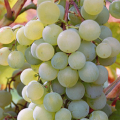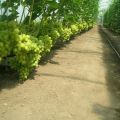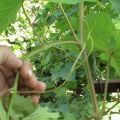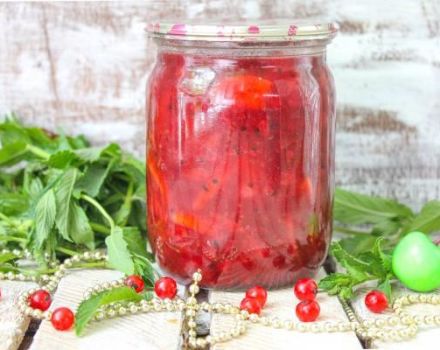Description of Krasnostop grapes and species characteristics, planting and care rules
The cultivation of Krasnostop Zolotovsky grapes is very common in the South of Russia. It was there that this technical grade was born. But in recent years, residents of other regions of the Chernozem region have also appreciated its merits. Its expansion is driven by both high yields and impressive resilience. So what did he actually bribe domestic gardeners with?
How the variety was bred
Krasnostop Zolotovsky was born in Russia, and was first described in 1980, on the Zolotovsky farm in the Krasnodar Territory. This is where it got its name. Experts consider his ancestors to be ancient Dagestan varieties, taken out during the campaigns by the Cossacks.
External characteristics
Like any other variety, Krasnostop grapes have their own distinctive characteristics. Individual nuances of appearance make it possible to distinguish this cultivar from any other.
Winegrowers focus on:
- general appearance of the bushes;
- leaves;
- shoots;
- shape and color of berries;
- the size of the bunches;
- their shape.
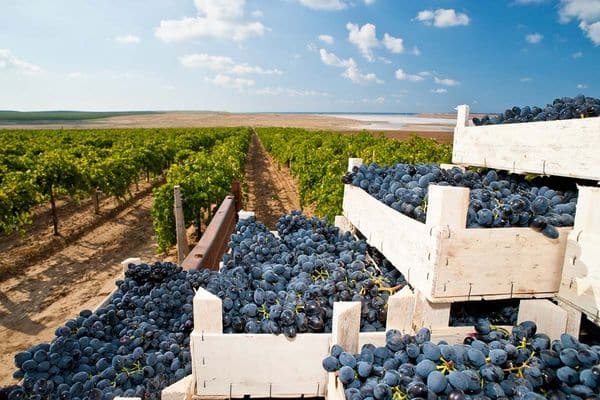
Although the taste of the fruits, the period of their ripening and the plant's resistance to frost are not attributed to the appearance, they are still singled out as the most important distinctive characteristics of the variety.
Bush and shoots
The bush of this grape has an average growth rate. At the same time, the maturation of the shoots is very early. It blooms with bisexual flowers, which is considered an important distinctive feature - the fact is that similar cultivars, like Gimra, bloom only with female flowers.
An important feature of the variety is the appearance of its leaves. Their color on the outside is always shiny and glossy, while on the inside - with pubescence. The veins are not green, but red, with a rich hue. The number of blades is equal to three, each of which has an expanded middle part.
Pollination
This variety is self-pollinating, which distinguishes it favorably from other cultivars of similar origin.
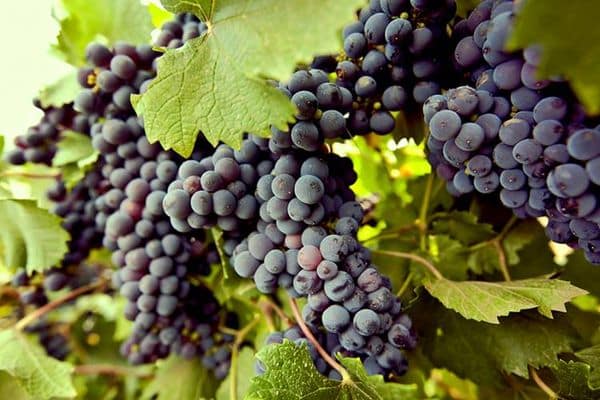
Ripening period and amount of harvest
This variety appeared in conditions close to the climate of most regions of the European part of Russia, south of Moscow. Therefore, it is distinguished by fast growth and maturation. It releases leaf buds at the end of April. Before the appearance of the crown, the release of signal shoots is observed. Well, the crown itself is in May. In most years, flowering is observed already in early June. And in the first decade of September, ripe fruits are already harvested.
The productivity of Krasnostop is such that it is invariably referred to as high-yielding varieties. Due to its increased durability, even in a harsh steppe, it gives at least 60 centners per hectare. Of course, with good care and suitable weather, yields will only increase.
In especially dry years, the harvest can fall and reach 20 centners per hectare.
Bunch size and berry flavor
The shape of the bunches at Krasnostop is quite classic - conical. Moreover, its dimensions are not very large, but not small either. The density of berry coverage is also average. Loose clusters with small fruits are often observed.
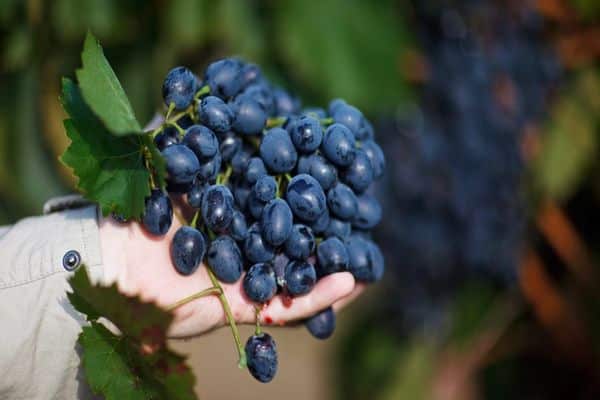
The main characteristics of grapes:
- size - small to medium;
- shape - rounded, turning into an oval;
- color - dark, blue, with a purple tint;
- a wax bloom is often seen on the surface of the berries;
- the skin is somewhat dense, easily detached;
- sugar content - from 22 to 30% on average;
- acidity - at the level typical for industrial varieties.
The popularity of the variety was brought by a high yield, equal, in good years, to 80 centners per hectare, and a high ripening rate - the berries become ripe no later than 137 days (under normal conditions).
Disease and insect immunity
Despite the good indicators of resistance to diseases, this cultivar is affected by typical fungal diseases of grapes - mildew and powdery mildew (powdery mildew). The danger grows in unfavorable years or with poor care. The main signs of these diseases are:
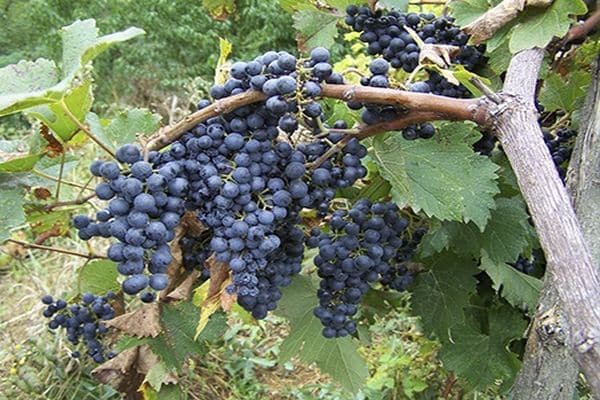
- spots on leaves, shoots, cuttings and berries;
- cracking of the skin;
- rotting pulp;
- desiccation of fruits.
With a particularly severe defeat, the bush emits an unpleasant odor.
To avoid such problems, the plant is sprayed, for preventive purposes, with preparations containing copper.
As for pests, the felt mite is considered the most dangerous for Krasnostop. Leaf rollers and grape mottles also affect the bushes of this variety, but on a smaller scale.
Frost resistant
Krasnostop Zolotovsky is able to survive the winter in most regions of the Chernozem region. Therefore, it is classified as medium cold resistant. At the same time, when temperatures drop below the cherished indicator of -23 degrees, it requires shelter.
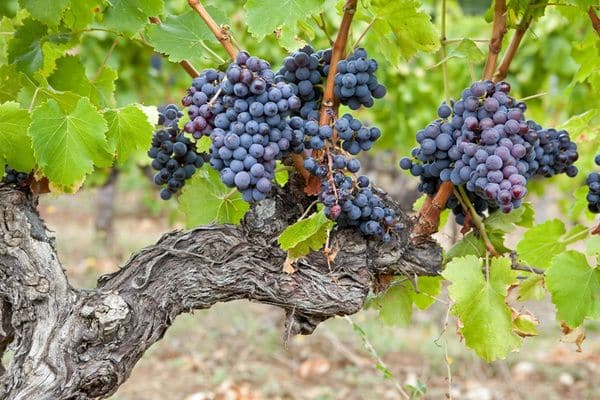
If the gardener did not manage to cover the bush - not a disaster. One of the main advantages of the variety is its ability to grow in spring even from frozen shoots. The only thing is that the timing of ripening and the beginning of the appearance of fruits are shifted.
Growing area
Krasnostop Zolotovsky feels as good as possible in the Black Sea region. At the same time, it is able to grow and bear fruit well throughout the Russian Black Earth Region.
Landing technology
Krasnostop Zolotovsky is a trellis variety. This means that before planting, take into account the need to install trellises up to two meters high. A sufficiently illuminated area is chosen, not subject to strong wind effects and, preferably, located on the south or east side. Groundwater in such an area should not be located too deep, but there should also be no danger of flooding.
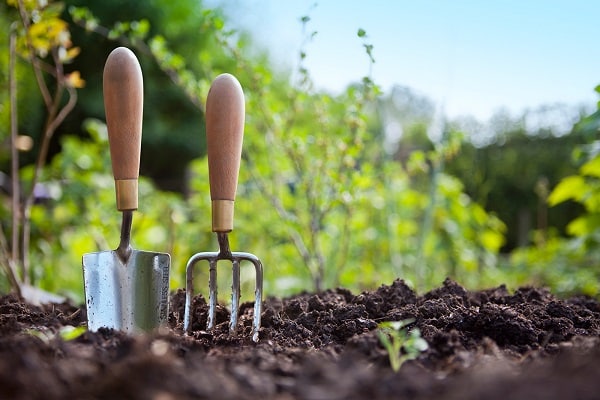
The preparation of the soil in the form of digging is carried out a couple of weeks before planting. If we are talking about poor soils, then humus, superphosphates and other suitable fertilizers are applied. Saplings are planted when there is no danger of even night frosts.
The minimum distance between seedlings is a meter. And between the ridges - one and a half. To obtain the optimal distance, these indicators are increased, on average, by 20-30 centimeters. Half a meter retreat from the fence.
Care rules
For all the unpretentiousness of this grape variety, it gives truly bountiful harvests only with proper care. And proper care includes:
- timely watering;
- disease prevention;
- weed and pest control;
- fertilizing with fertilizers;
- pruning.
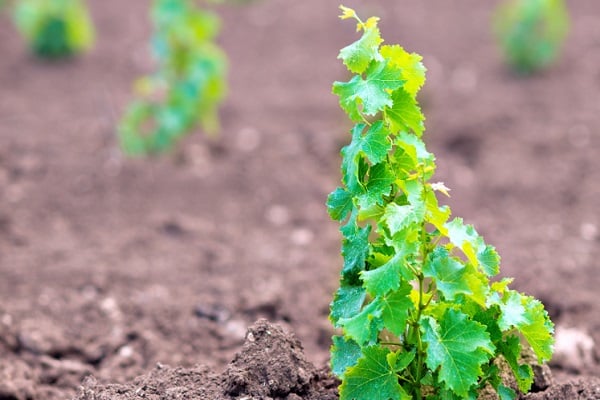
Only when all this is taken into account will the grower be able to enjoy the fruits of his labors.
Irrigation
Timely watering is a mandatory procedure in the case of Krasnostop. It is able to grow in arid steppe, but prefers regular moisture.
The most abundant watering is the first. Immediately after planting the seedlings, at least three buckets of water are poured under them. After that, they water it every time the soil dries out noticeably. It is advisable to loosen the soil before irrigation. The presence of drainage is also important.
In dry years, the grapes are watered more often and loosened more intensively.
Top dressing
Top dressing of grape bushes is carried out not as often as in the case of some other crops, but it is not neglected. Much depends on the type of soil in which the plant lives. If it is black soil, then less fertilizers are used.
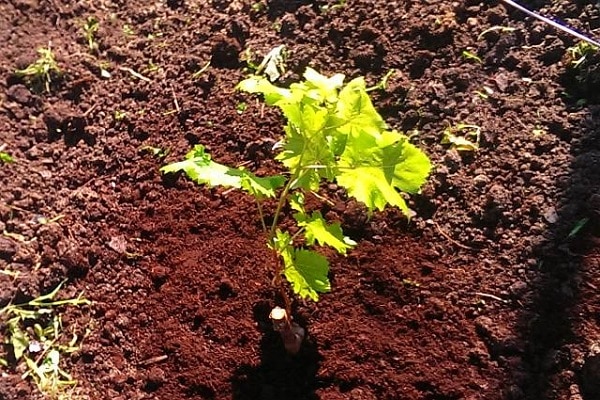
The first feeding takes place before planting. Compost or humus is added to the beds. In the future, special nutrients are used less often - once a year or two years. At the same time, they are limited to nitrogen fertilizers, which contribute to an increase in the sugar content in berries.
Trimming and pinching
Pruning is a must for any vine. It is used for the following reasons:
- to improve frost resistance;
- to create a strong compact bush;
- to increase productivity.
Pruning is done every few weeks, starting in the first year of the culture.
Shelter from frost
As noted above, Krasnostop Zolotovsky is moderately hardy. This means that in some years it requires shelter. To do this, use conventional covering materials like agrofibre.
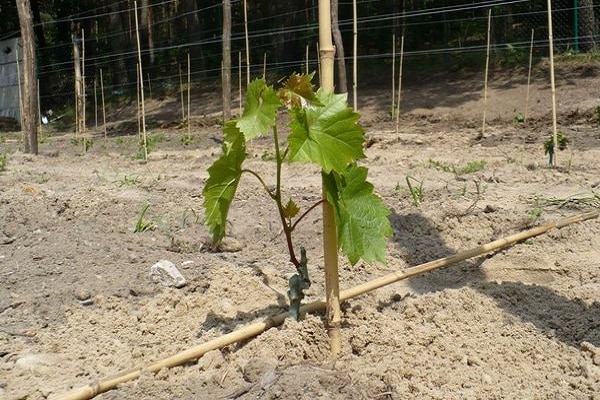
Preventive treatment
For the prevention of grape diseases, preparations containing copper are used. For example, vitriol solution. Sprayed several times per season under unfavorable conditions.
Diseases and pests - ways to deal with them
The main pest of this variety is the felt mite. A solution with soap or special preparations is used against it.
Conclusion
Krasnostop Zolotovsky is one of the best domestic varieties. Its widespread use is facilitated by its ability to withstand low temperatures in winter and a ripening rate of 135 days. Disease resistance must not be forgotten either.




